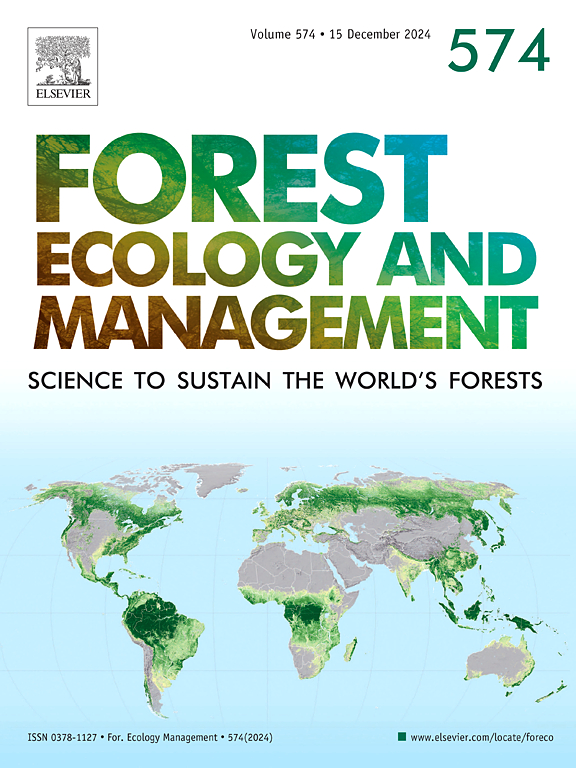Carbon allocation to roots of suppressed Norway spruce increases immediately after selection harvest
IF 3.7
2区 农林科学
Q1 FORESTRY
引用次数: 0
Abstract
Selection harvesting in fertile, drained peatlands is an alternative for even-aged forestry, where clearcutting takes place at the end of each rotation period. Avoiding clear-cuts has been promoted due to reducing negative externalities, like nutrient loading to waterways and significant greenhouse gas emissions after harvesting. Our aim was to understand the responses of suppressed Norway spruce trees to selection harvesting. We analysed biomass accumulation and priorities of carbon allocation to stems, proximal roots and distal roots. We quantified carbon isotope composition (δ13C) and cross-sectional growth of proximal (supporting) roots and distal (water and nutrient transportation) roots. The study took place in a drained, fertile boreal peatland site in southern Finland, where a selection harvest was conducted in 2016, while an area as a control was left untouched. Our results show that suppressed Norway spruce trees increased their cross-sectional growth of proximal roots and distal roots twice as much as that of the stem during the first five years after the selection harvest. The timing and magnitude of carbon allocation to proximal roots and distal roots were immediate and equal, underlining the fact that trees were investing in mechanical support and nutrient and water uptake. These results show that the climate benefits of selection harvest were not delayed. Instead of immediate growth of stems, we found immediate growth of roots.
求助全文
约1分钟内获得全文
求助全文
来源期刊

Forest Ecology and Management
农林科学-林学
CiteScore
7.50
自引率
10.80%
发文量
665
审稿时长
39 days
期刊介绍:
Forest Ecology and Management publishes scientific articles linking forest ecology with forest management, focusing on the application of biological, ecological and social knowledge to the management and conservation of plantations and natural forests. The scope of the journal includes all forest ecosystems of the world.
A peer-review process ensures the quality and international interest of the manuscripts accepted for publication. The journal encourages communication between scientists in disparate fields who share a common interest in ecology and forest management, bridging the gap between research workers and forest managers.
We encourage submission of papers that will have the strongest interest and value to the Journal''s international readership. Some key features of papers with strong interest include:
1. Clear connections between the ecology and management of forests;
2. Novel ideas or approaches to important challenges in forest ecology and management;
3. Studies that address a population of interest beyond the scale of single research sites, Three key points in the design of forest experiments, Forest Ecology and Management 255 (2008) 2022-2023);
4. Review Articles on timely, important topics. Authors are welcome to contact one of the editors to discuss the suitability of a potential review manuscript.
The Journal encourages proposals for special issues examining important areas of forest ecology and management. Potential guest editors should contact any of the Editors to begin discussions about topics, potential papers, and other details.
 求助内容:
求助内容: 应助结果提醒方式:
应助结果提醒方式:


